Journal of Tourism & Hospitality
Open Access
ISSN: 2167-0269
+44 1300 500008
ISSN: 2167-0269
+44 1300 500008
Research Article - (2019)Volume 8, Issue 5
This study aimed to know the awareness and perceptions of people toward sex tourism in Makati City, Philippines where tourism and business collides that resulted to presence of prostitution. The researcher assessed the understanding of people on the concept of sex tourism, their awareness on the presence of the said practice in Makati City and on policies concerned with it, people’s belief towards the reasons for purchasing and selling sexual activities, and their opinion towards harm caused by sexual activities to buyers and sellers. This study showed that people understand what sex tourism is, and they are very much aware of its existence in Makati City, however, they don’t know how to put end to it with beliefs that business operators has strong connections with the government. Despite of open-mindedness, people are still aware about the illegality of this practice in the Philippines, but they don’t know details of laws concerned with it. Although there are other reasons for selling and purchasing sexual activities, people see poverty as the number one motivation why people choose to work as prostitutes, while Tourists’ demand is the reason why there is a presence of prostitution in the city, and regardless of being profitable, people still believed sex tourism should be stopped due to extreme harm it causes to buyers and sellers. The researcher concludes that this study is a good foundation for solutions to solve the problem. This will help concerned organizations and people to think of ways on how to stop sex tourism in the Philippines, starting with prostitution in Makati City. Solutions based on ideas of the authority should be shared to local residents including law enforcers and tourists through Professional Training Programs so that people as one nation could achieve the goal, whether that goal is to put end or to legalize Sex Tourism in the Philippines.
Tourism; Awareness; Law enforcement; Ecotourism
Night life is widely accepted in the Philippines, particularly in Makati City with the presence of a number of bars and clubs [1]. Having hotels minutes away to P. Burgos Street which is considered as the City’s red light district, it is usual to see foreigners walking around after business hours looking for a place to unwind. Padre Burgos Street is an estimated one kilometer road filled with Bars, Clubs, and Pubs which is identifiable through posters and its lights. According to an online article written by Francis Q. dated year 2015, as early as seven in the evening, activities start to take place where you could see women dressed up like masseuse, and homosexuals gather in the street, women enter bars to work as pleasure providers, and pimps “Managers” sit in front of the entrance door to invite passers-[2].
The term “sex tourism” is to travel to engage in sexual activity, particularly with prostitutes [3]. It is human trafficking that includes trafficking for sexual activities and has been a long standing issue. It includes: recruitment, harboring, transportation, provision, or obtaining of a person for the purposes of a commercial sex act [4]. In the Philippines, sex providers or prostitutes are considered as “Victims” of poverty and social change, a reason why they were rescued instead of being apprehended. Based on research, another reason is that there are no specific criteria up to date to help identify if an activity is under sex tourism or not, since it is very difficult to find. Academic research and data on sex tourism is limited, as “it remains a fairly obscure and unknown activity to the general public, academia and helping professions” [5]. However, when it comes to forced labor in the commercial sex industry, women and girls equate 99% of victims, and of these, 21% are children [6].
The legal status of prostitution varies from country to country, from being legal and considered a profession to being punishable by death. Some jurisdictions outlaw the act of prostitution (the exchange of sexual services for money); other countries do not prohibit prostitution itself, but ban the activities typically associated with it (soliciting in a public place, operating a brothel, pimping etc.), making it difficult to engage in prostitution without breaking any law; and in a few countries prostitution is legal and regulated [7]. In www.huffingtonpost.com, an article titled: “The most popular countries for Sex Tourism” was posted on September 1, 2015, and was updated a year after by Lara Grant of oyster.com. Countries in the list are Dominican Republic who is at the number 1 spot, followed by Thailand, Cambodia, The Netherlands, Spain, Brazil, and Philippines. Data shows that only Dominican Republic, The Netherlands, Spain, and Brazil out of the 7 countries permit Sex Tourism since prostitution there is legal, meanwhile, despite of illegality, prostitution in Cambodia, Thailand, and Philippines is widespread all over the world [8].
Though prostitution is illegal in the Philippines, it’s easy for locals and visitors to find prostitutes at bars and massage parlors [9]. Prostitution started around Clark Air Base in Angeles City since the early 1960s, when the base assumed importance because of the Vietnam War. During the 1970s, the main street of Olongapo City had no less than 30 girlie bars catering to the needs of U.S. Navy troops visiting Subic Naval base. The city acquired the pseudonym "Sin City". The closure of the U.S. bases in these two places did not change the scenario much — it only changed the clientele. Fields Avenue near Clark, Angeles, Pampanga continued to grow as a center of the sex tourism industry, under the umbrella of "entertainment" and "hospitality industry". The girlie bars at Olongapo were closed down in a major drive by the then governor Jane Gordon; they merely shifted, however, to the neighboring town of Barrio Baretto which contains a series of at least 40 bars which act as prostitution centers [10].
The number of respondents for this study is limited to 384 individuals computed using SLOVIN formula, which was divided into 3 categories: 128 Local residents, 128 foreign tourists, and 128 Local tourists; all in Makati City, Philippines. The gathered information is limited to: 1. Awareness of the local community, and foreign and local tourists about sex tourism in Makati City, Philippines; 2. Perceptions of foreign and local tourists, and residents, toward sex tourism; and 3. Reasons of prostitutes in promoting prostitution.
This research is a Descriptive research since it involves description, recording, analysis, and interpretation of the present condition of Sex Tourism in Makati City, Philippines [11]. Although this research is highly accurate, it does not gather the deep reasons behind the situation. An online and printed survey form was used to collect the responses of the respondents, which lasted for 1 month from the 30th day of June and ended on the 29th day of the following month; year 2017.The survey was consisting of a total of 20 questions that has 100% response rate from respondents.
Representation of data
The tables present the calculation of the respondents’ response to the set of questions asked to know the Awareness and Perceptions toward Sex Tourism in Makati City, Philippines.
Sub-problem no. 1: What terms would people use personally to describe sex tourism?
45.05% of the respondents said they will personally use “Prostitution” to describe sex tourism, 17.75% prefer the word “Prostitutes”, and 16.14% wrote “Sexual Activity”. 26 out of 384 respondents or 6.77% said they’ll use “Illegal”, 4.95% prefer “Sad”, and 2.34% of the respondents responded “inappropriate”, while 1.56% of them said it is “Lust”. The word “Hooker” was the response of 4 respondents, 0.52% on the other hand said “Issue” and “Intercourse”, while the rest has their own terms which differ from each other.
Sub-problem no. 2: How much social problem people think sex tourism is?
Figure 1 presents how much of a social problem sex tourism is. 64.06% of the respondents said sex tourism is a serious problem, while according to 28.65% of them, it is quite a problem. The remaining 7.29% said it is not a problem at all.
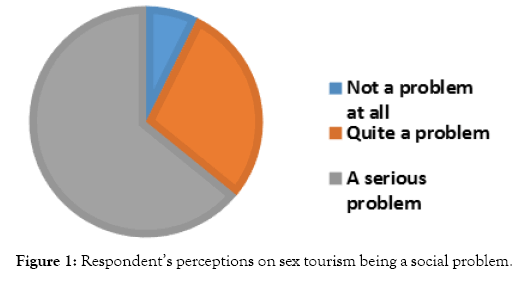
Figure 1: Respondent’s perceptions on sex tourism being a social problem.
Sub-problem no. 3: How harmful are sexual activities to the seller based on perceptions?
Sexual activities are extremely harmful to sellers according to 74.22% of the respondents. 23.44% of them said it is quite a problem, and the remaining 2.34% answered not harmful at all (Figure 2).
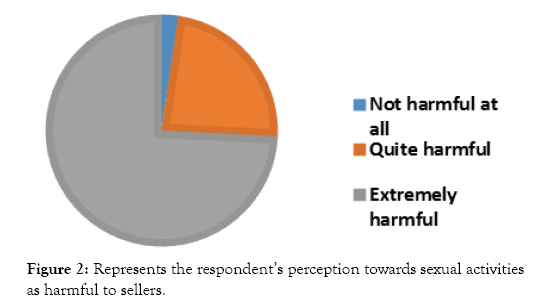
Figure 2: Represents the respondent’s perception towards sexual activities as harmful to sellers.
Sub-problem no. 4: How harmful are sexual activities to the buyer based on perceptions?
Out of 384 respondents, 255 or 66.41% believed sexual activities are harmful to buyers, while 33.59% said it is quite a problem (Figure 3).
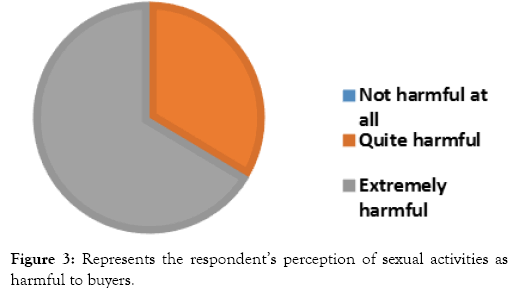
Figure 3: Represents the respondent’s perception of sexual activities as harmful to buyers.
Sub-problem no. 5: Are people aware of International laws regarding sex tourism?
220 respondents are not aware of International laws concerned with sex tourism, while the remaining 164 said they’re aware of such laws (Figure 4).
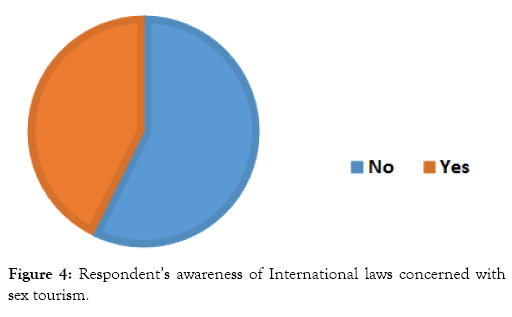
Figure 4: Respondent’s awareness of International laws concerned with sex tourism.
Sub-problem no. 6: Are people aware of Philippines laws regarding sex tourism?
From the total number of respondents, 64.06% said they are aware of Philippines laws concerned with sex tourism, while the rest aren’t (Figure 5).
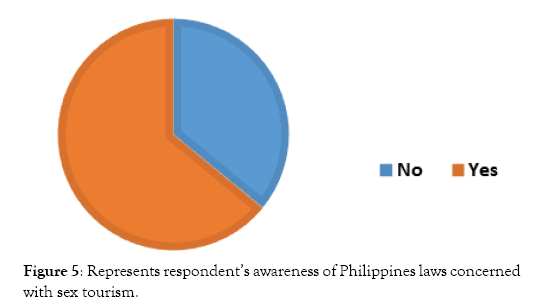
Figure 5: Represents respondent’s awareness of Philippines laws concerned with sex tourism.
Sub-problem no. 7: Are people aware of laws in Makati City regarding sex tourism?
Most of the respondents are not aware of laws in Makati City concerned with sex tourism with a percentage of 72.14%, while rest said they are aware of such laws (Figure 6).
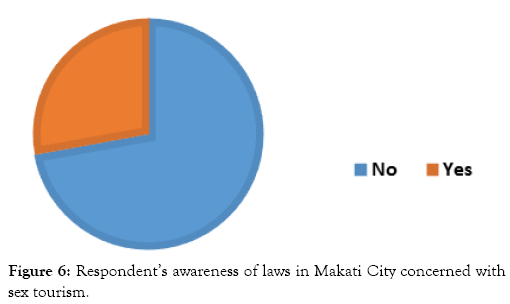
Figure 6: Respondent’s awareness of laws in Makati City concerned with sex tourism.
Sub-problem no. 8: Do people think advertisements or posters with nude woman offers sex tourism?
Majority of the respondents with a percentage of 41.93% said advertisements with nude woman offer sex tourism, while 32.29% of them disagreed to the opinion of the majority, and the remaining 25.78% are not sure about it (Figure 7).
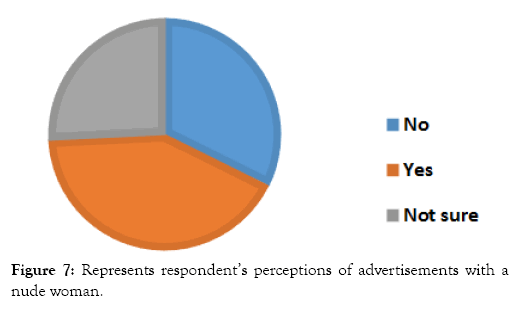
Figure 7: Represents respondent’s perceptions of advertisements with a nude woman.
Sub-problem no. 9: Do people think advertisements or posters with a woman wearing lingerie offers sex tourism?
58.85& of the respondents said advertisements with a woman wearing a lingerie don’t offer sex tourism, while 23.7% of them are not sure about it, and the remaining 17.45% said it promotes sex tourism (Figure 8).
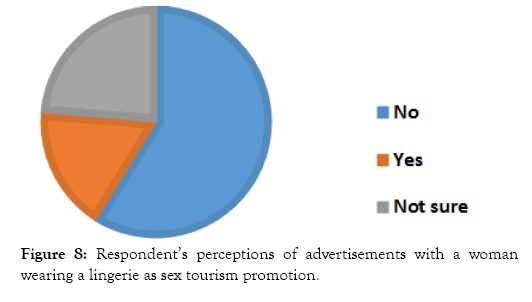
Figure 8: Respondent’s perceptions of advertisements with a woman wearing a lingerie as sex tourism promotion.
Sub-problem no. 10: Do people think advertisements or posters with a woman showing her cleavage offers sex tourism?
Out of 384 respondents, 268 said advertisements with a woman showing her cleavage don’t offer sex tourism, while 64 of them are not sure about it, and the remaining 52 individuals said it promotes sex tourism (Figure 9).
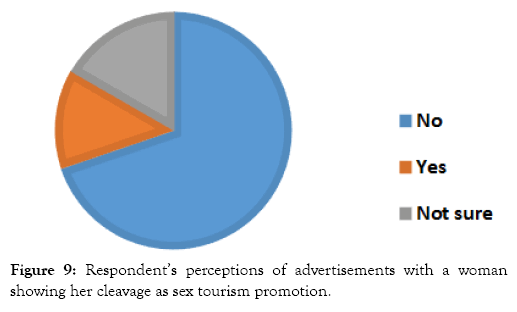
Figure 9: Respondent’s perceptions of advertisements with a woman showing her cleavage as sex tourism promotion.
Sub-problem no. 11: What is the primary motivation for purchasing sexual activities in Makati City based on perceptions?
71.88% of the respondents said sexual satisfaction is the primary reason for buying sexual activities, while 14.06% said it is because of curiosity, and the remaining 14.06% answered Companionship and other (Figure 10).
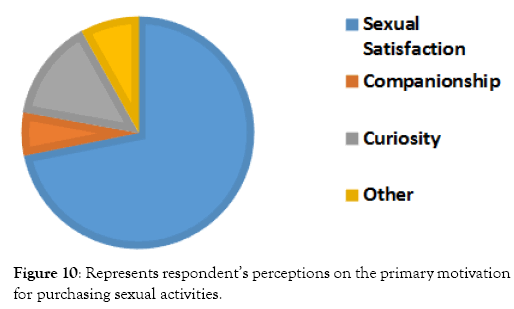
Figure 10: Represents respondent’s perceptions on the primary motivation for purchasing sexual activities.
Sub-problem no. 12: What is the primary motivation for selling sexual activities in Makati City based on perceptions?
The majority said the primary reason for selling sexual activities is financial need, while 12.76% said its sexual satisfaction, and the remaining 3.13% believed its curiosity (Figure 11).
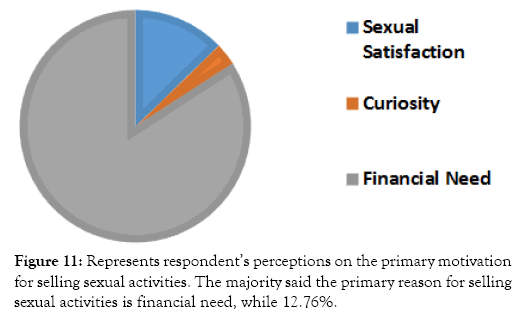
Figure 11: Represents respondent’s perceptions on the primary motivation for selling sexual activities. The majority said the primary reason for selling sexual activities is financial need, while 12.76%.
Sub-problem no. 13-16: Responses to scenario for type of situations occurring in Makati City linked to Sex Tourism.
Tables 1-4 represent respondent’s perceptions on type of situations occurring in Makati.
Table 1 presents respondents’ perceptions on type of situations occurring in Makati City. The majority said the scenario is sex tourism, while 4.95% are not sure about it, and the remaining 1.3% disagreed to the answer of the majority.
| Question | Respondent’s perception | ||
|---|---|---|---|
| Yes | No | Not sure | |
| 13. A man is told about a specific location where engaging in sexual activities with local women for cash is encouraged. He decides this is where he will vacation next. Once there, he searches for the best place to engage in sexual activities with local women for the length of time he is on vacation. IS THIS SEX TOURISM? |
360=93.75% | 5=1.3% | 19=4.95% |
Table 1: Response to scenario 1.
Table 2 presents respondent’s perceptions on type of situations occurring in Makati City. Out of 384 respondents, 215 said the scenario is not sex tourism, while 131 individuals said it is sex tourism, and the remaining 38 are not sure about it.
| Question | Respondent’s perception | ||
|---|---|---|---|
| Yes | No | Not sure | |
| 14. A woman from Europe visits Makati City, Philippines for a business trip. She goes to Greenbelt 5 Mall where she unintentionally meets a man. They head to the club and drink. They both returned to her hotel room where they have sex. IS THIS SEX TOURISM? | 131=34.11% | 215=55.99% | 38=9.90% |
Table 2: Responses to scenario 2.
Table 3 presents respondent’s perceptions on type of situations occurring in Makati City. 87.76% of the respondents interpreted the scenario as sex tourism, while 8.59% of them are not sure about it, and 3.65% said it’s not.
| Question | Respondent’s perception | ||
|---|---|---|---|
| Yes | No | Not sure | |
| 15. Local taxicab drivers shuttle adult tourists to local tourism destinations in Makati City, Philippines where sexual services are provided. A fee is charged to each tourist before they enter and once inside they pay for sexual services from the women employed at these establishments. IS THIS SEX TOURISM? | 337=87.76% | 14=3.65% | 33=8.59% |
Table 3: Responses to scenario 3.
Table 4 present respondents’ perceptions on type of situations occurring in Makati City linked to Sex Tourism. According to 61.72% of the respondents the scenario is not sex tourism, while 23.96% said it is, and the remaining 14.32% are not sure about it.
| Question | Respondent’s perception | ||
|---|---|---|---|
| Yes | No | Not sure | |
| 16. A man vacationing unintentionally meets a local woman in a restaurant, and they have a sexual encounter while he is on vacation. Before leaving the country, he arranges to care for her financially until he returns. They communicate frequently and he returns to marry her. They later relocate to his native country. IS THIS SEX TOURISM? | 92=23.96% | 237=61.72% | 55=14.32% |
Table 4: Responses to Scenario 4.
Sub-problem no. 17: Respondent’s experience of being asked where to purchase sex
327 out of 384 respondents said they were never been asked where to purchase sex, while the remaining 57 said they were already asked about it (Figure 12).
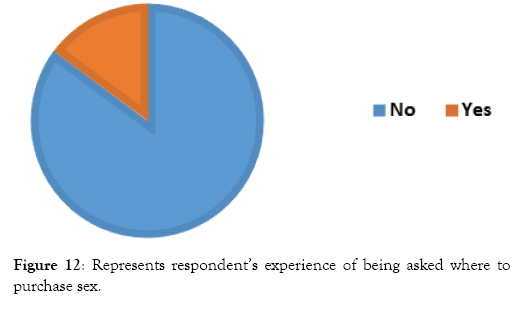
Figure 12: Represents respondent’s experience of being asked where to purchase sex.
Sub-problem no. 18: Respondent’s background of working in the sex industry
Most respondents have never been employed in the sex Industry with the percentage of 97.66%, while 2.34% of them have worked in the said Industry (Figure 13).

Figure 13: Represent respondent’s background of working in the sex industry.
Sub-problem no. 19: Respondent’s experience of purchasing sexual services
A total of 343 respondents said they haven’t purchased sexual services, while the remaining 41 individuals have already bought sexual services (Figure 14).
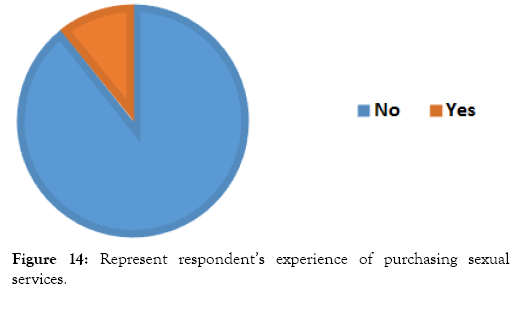
Figure 14: Represent respondent’s experience of purchasing sexual services.
Sub-problem no. 20: Are the respondents aware of sex tourism in Makati City before this survey?
84.64% of the respondents said they were aware of sex tourism in Makati City before answering the survey, while 15.36% of them weren’t (Figure 15).
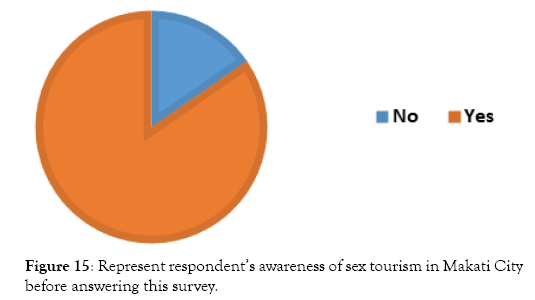
Figure 15: Represent respondent’s awareness of sex tourism in Makati City before answering this survey.
This Research plays a significant role in the Tourism Industry, and the economy of the Philippines, thus, the legislative branch of the government to realize solutions toward the issue, and law enforcement agencies to encourage a stricter implementation of laws. This would assist Researchers interested in assessing social issues associated with prostitution, especially nowadays that there are recorded cases of human trafficking in the country.
Generally speaking, people see Sex Tourism alike with Prostitution, for the mere fact that the two terms have almost the same definition. As social problem, people see it as a serious one due to harm it causes to buyers and sellers, and the negative image it establishes for the country. This activity also provides our children a wrong perspective towards life and/or career. People fully understand the concept of Sex Tourism since it is obviously accepted with the presence of a number of bars that are inclined with Prostitution despite of its illegality. Though results show that poverty is the main reason of this sub- Industry, it is still not an excuse since it is against the law, and the fact that job opportunities in the country are a lot.
This research should awaken the Philippines. Currently, the Philippine Government is focused on getting rid of illegal drugs in the country since it has been seen as a serious problem. In reflection to the results of this study, the Philippine Government should consider a nationwide campaign against prostitution starting in Metro Manila and Clark, Pampanga. It may be true that Businesses with this kind of concept bring monetary benefits to the economy and the society, but it should be stopped since it is unlawful. If the society finds Sex Tourism to have more positive benefits than negative ones, then one should step up and propose to make it legal.
Understanding towards the concept of sex tourism Sex Tourism is popular in the Philippines based on literatures, some of which even considered the country as one of most popular in terms of the said practice. Survey result shows people believe that prostitution is the closest definition for sex tourism which is defined as “the act or practice of engaging in sexual intercourse for money” by Webster’s Universal College Dictionary, 2014 edition published by Gramercy Books. It also confirmed that people understand the said practice very well based on their responses on questions number 13, 14, 15, and 16, where they’ve identified the scenarios where sex tourism is actually happening, while in terms of marketing, people consider advertisements with nude women the closest to promote sex tourism, compared with advertisements with a woman wearing a lingerie, and women showing their cleavages.
Awareness of sex tourism practices in Makati City, Philippines
Articles found in magazines and on line clearly say sex tourism is fully operational in Makati City, Philippines. These materials were justified by the result of this study where people confessed their awareness towards the practice; however, they are still confused why despite of its illegality, it still exists. People are also aware of the business hours of the internationally known Padre Burgos Street which is said to start as early as 6 in the evening and end at around 5 in the morning. Upon collection of data, some respondents had conversations with the researcher; they gave information about the presence of freelance prostitutes along Makati Avenue up to J.P. Rizal Street, and about a brothel in Maluggay Street where there are a lot of sex providers to choose from.
Awareness towards policies linked to sex tourism
Based on wikipedia.org, Sex Tourism or the best way to describe it which is Prostitution, is illegal in the Philippines although somewhat tolerated among society with law enforcement being rare with regards to sex workers. Some Policies/Laws in the Philippines includes Republic Act No. 9208 also known as the Anti-Trafficking in Persons act of 2003, and a proposed Anti-Prostitution Act or the Senate Bill No. 2621.These laws protect women and children from human trafficking including the illegality to work as sex/ pleasure providers.
People are not aware of certain international, Philippines, and Makati City’s policies concerned with sex tourism; however, they know that it is illegal in the country being the largest catholic country in Asia. Some respondents shared their thoughts of reporting the said practice to authorities, but they don’t know how since it is believed that operator of such establishments has a strong connection with the government [12-14].
Belief towards reasons of purchasing and selling sexual services
According to the Philippine Statistics Office, as of 2013, the country had a poverty incidence of 24.9% which is equivalent to around 24 million Filipinos considering themselves as poor. This information was justified by the response of people on question number 12 where they cited “Financial need” as the primary reason of selling sexual services. In terms of buying sexual services, people believe that the primary reason is Sexual Satisfaction.
Opinion on harm caused by sexual activities to buyers and sellers
The result of this study shows people see Sex Tourism as a serious problem that should be addressed immediately. Sexual transmitted disease is also considered as a threat based on interviews done by the researcher, and this is confirmed by the responses on the 3rd and 4th questions which states that people consider selling and purchasing sexual activities extremely harmful to the buyer and to the seller.
This research therefore concludes that sex tourism is a growing subindustry of Tourism. Having more foreign and local tourists looking for sexual satisfaction in Makati City will enable its continuous growth. It is also considered as an invulnerable practice since its whereabouts is very difficult to identify, and most information about it are based on opinions and assumptions. However, it is believed to really exist with the presence of confessions found in electronic sources from tourists who have tried the service itself, and based on actual experiences of local tourists while staying near Padre Burgos Street, Makati City. This study also shows that people although a little bit confused in terms of law implementation, are still aware of the illegality of this practice, same with the whole concept of it. The researcher also learned that the primary market of this sub-industry are foreign tourists who are mostly solo travelers with a general image of being wealthy, and that harmfulness is at its peak when engaging to sexual activities with a prostitute, same with the harm a prostitute might get from their customers such as Sexual Transmitted Diseases.
Having people aware of the illegality of sex tourism in Makati City, Philippines, both the National and the Local Government Units should focus on it. If this will continue to grow in the following years, people might think there is a huge problem with our law enforcement agencies in particular, and the government in general. The community should also organize seminars on sex tourism so that more people will be aware of it, especially on current policies concerned with prostitution. This will help them to understand the pros and cons of sex tourism, at the same time, this will help them to create ways on how to put end to it.
Having a very good reputation in terms of development, Makati City, Philippines should avoid getting scratches of bad image which may come from the presence of sex tourism. The Department of Tourism should also play a huge role on stopping this so-called madness since they have the support of the people. Night life is considered as a need especially to people who spent the whole day working, however, selling of sexual services is not needed to promote hospitality and service. The researcher suggests the continuous serving of liquors to customers, but the termination of sexual services. Another suggestion is to focus on ecotourism and Cultural Heritage tourism since the Philippines is known as a country rich in Natural and Cultural Heritage Tourism Destinations. “Philippines being one of the top countries for ecotourism and Cultural Heritage Tourism” sounds more beautiful than having it as one of the top countries for sex tourism.
This study supported what is written on papers over the years saying that poverty is a serious problem in the Philippines. It is good to know that State Universities started to offer tuition free education, which will encourage our children to study so they could become successful someday. The researcher suggests hiring “qualified” Professors who are not just knowledgeable in their field of specialization, but also excellent managers and teachers so students will really learn.
The Government should think of solutions to solve this problem, however, if it continuous to grow despite of actions, they should consider legalization, and this process should include creation of laws that will control the said practice. The government should also have designated areas/cities for sex tourism so uncontrolled growth would be avoided.
Citation: Mark GWA (2019) Sex Tourism in the Philippines: A Basis for Planning, and Policy Making and Amendments. J Tourism Hospit 8:416. doi: 10.35248/2167-0269.19.8.416
Received: 03-Sep-2019 Accepted: 17-Oct-2019 Published: 24-Oct-2019
Copyright: 2019 Mark GWA. This is an open-access article distributed under the terms of the Creative Commons Attribution License, which permits unrestricted use, distribution, and reproduction in any medium, provided the original author and source are credited.